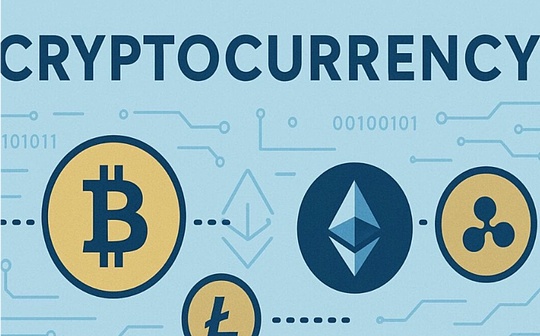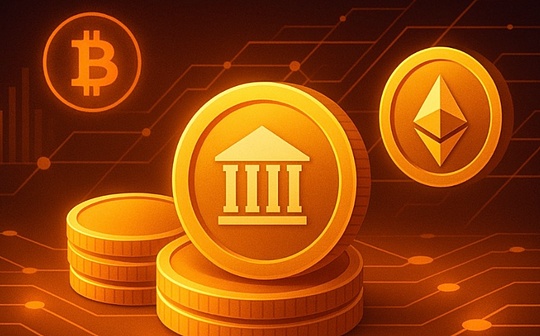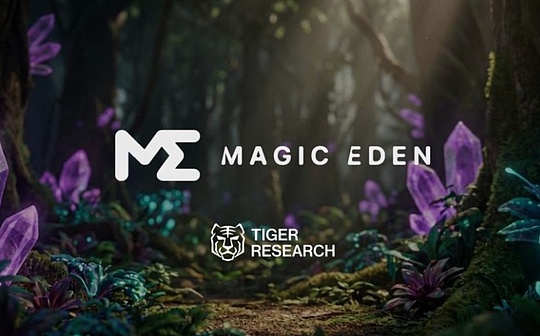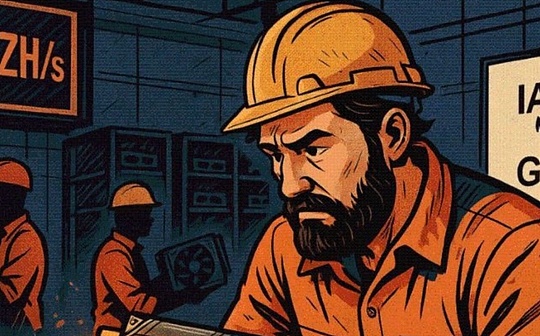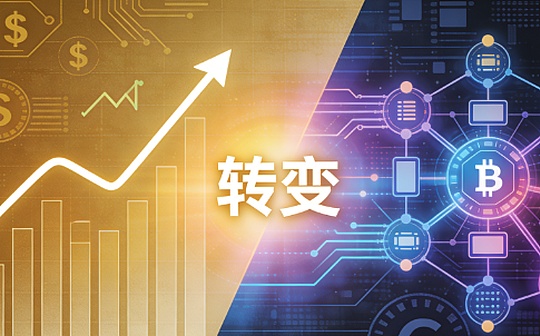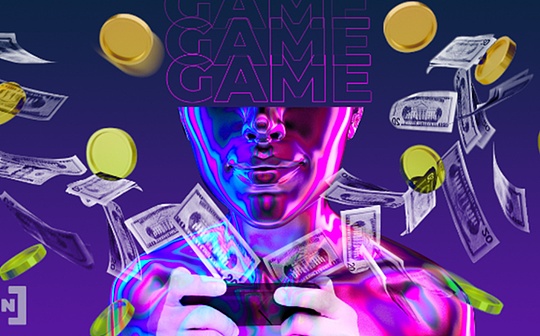
Author: Sam Englebardt Source: Galaxy Translation: Shan Oppa, Bitchain Vision
It took much longer to reach the current stage than I originally expected.As early as when blockchain technology first entered the mainstream vision – the Bitcoin craze was in full swing and early NFT projects were all the rage – I firmly believed that the gaming industry would be the first field to embrace Web3 with all my heart.In my opinion, the concepts of real digital asset ownership, decentralized economic system, and seamless asset circulation are simply tailor-made for the game.After all, this is an industry that has long been accustomed to in-game trading, character customization and virtual worlds. Why not embrace the opportunity for players to truly control digital items at the first time?
But it turns out that I’m too optimistic.After years of trial, slow progress, and countless hype cycles that promised that the game revolution was coming, the real breakthrough for Web3 gaming has not yet arrived.Where are those AAA-level blockchain games?Those canFortnite, FIFA or Final FantasyWhat about high-quality games that can seamlessly integrate tokenized assets and will not make players feel excluded?
Recently, things seem to have changed.After years of stumbling prototype testing and small-scale success, we finally welcomedThe first batch of truly high-quality blockchain games.These projects not only have a professional development team, a mature token economic system, and a user-friendly experience, but most importantly—Their gameplay is fun enough.From immersive open-world NFT assets to on-chain card games that rival the complexity of Magic, we finally see signs of an upcoming market.
So, it’s time to think: “What’s next for Web3 gaming? How will this industry evolve in the next few months and years?”
Review of early hype and unfulfilled potential
To understand the future development direction, we must first review how Web3 games have reached this point today.
One of the earliest success stories when NFT first attracted global attention wasCryptoKitties.This game launched in 2017 allows players to “breed” digital cats on the Ethereum blockchain, which is innovative and extremely attractive.However, the craze quickly surpassed the technology itself: At one point, CryptoKitties’ transaction volume occupied the Ethereum networkMore than 15%, resulting in severe congestion of the entire network and soaring transaction fees.Although it has gained great attention, it has also exposed the blockchain game’sScalability issues.
Subsequently, other early experiments followed one after another.“Spellls of Genesis”and“Rare Pepe Cards”Let collectors get in touch with the concept of blockchain trading cards.But these games mainly attract hardcore encrypted players and have not entered the mainstream gaming circle.Even afterwardsP2E modeMake a name for example“Axie Infinity”, traditional players still don’t buy it.Many criticized these early P2E games for being too simple to play, even more like a “money-making task” than a real entertainment experience.
even so,Axie Infinity’s economic model has indeed achieved amazing success——In 2021, the game’s trading volume exceeded$4 billion, shocked the entire industry.However, many traditional players still believe that Web3 games are“Gameability” still needs great improvement.
So, why has Web3 games been unable to achieve large-scale breakthroughs?There are several reasons:
•High transaction fees: Early blockchain games rely on Ethereum, and Ethereum’s transaction fees (Gas Fee) are often expensive and unpredictable.
•Crypto market volatility: The value of NFT assets purchased by players often fluctuates violently with the market, affecting the gaming experience.
•Complex user experience: Users need to master private key management, on-chain wallet and other technologies, resulting in extremely high thresholds.
•Regulatory uncertainty: Governments have different attitudes toward the NFT and P2E economic models, which has led to game developers facing policy risks.
•Resistance from traditional gaming companies: The giants in the game industry are used to being controlled by themselvesCentralized intra-purchase economy, be wary of the decentralized model of blockchain.
Ultimately, these issues result in the development of high-quality Web3 games much lower than expected, forming a relationship between the initial commitment and the actual playable product.Year-long fault period.
Turning point: Advances in Layer-2 Solutions and Development Tools
Today, the Web3 gaming industry seems to have ushered in a key turning point, driven mainly by multiple factors, first and foremostImprovements to blockchain infrastructure,2017CryptoKitties blocks EthereumWhen it comes to the blockchain gameScalability bottleneck.Several solutions have emerged in the past few years:
•Layer-2 Solution:likePolygon, Immutable X, Arbitrum, These layer two networks significantly reduce the cost of minting and trading game assets and reduce network congestion while still relying on Ethereum’s security.
•Alternative Layer-1 public chain:likeSolana, Avalanche, Polkadot, BNB Chain, providing faster transaction processing speeds and more stable handling fees, making it a popular choice for game developers.
• Improvement of developer tools and SDK:Blockchain technology is getting even moreEasy to integrate.Today, many game development engines (e.g.Unity and Unreal Engine) has supported Web3 integration, allowing game studios to easily embed NFT or on-chain assets into games.
In addition, the wallet experience has also been greatly improved.Compared to early players, they must be manuallyConfigure blockchain network and store private keysThe complex process nowadaysSelf-hosted wallet, single sign-on, seamless Web3 interactionThe plan has greatly lowered the entry threshold.
High-quality Web3 games rise: market trends are changing
A new batch of blockchain games are pushing Web3 into the mainstream vision – these games are not just simple chain games, but throughIn-depth integration of blockchain technology allows players to truly experience interesting and meaningful gameplay, and has sufficient market appeal to attract a wider audience.Here are a few high-quality Web3 games to watch out for, they show the industryProduction level, brand cooperation and financial supportThe huge progress in terms also proves that Web3 games are moving towards a more mature stage.
Mythical Game: NFL Rivals & FIFA Rivals
In a studio dedicated to developing mainstream Web3 games,Mythical GamesIt is one of the most representative teams at present.As one of the earliest professional gaming companies established in the Web3 field, MythicalBlankos Block PartyMake a name for itself, with theWith gaming experience as the core, blockchain technology is hidden behind the scenesThe concept of “creates a gaming experience that combines playability and blockchain features. Now they are working withNFL (NFL)andFIFA (FIFA)cooperation leads the Web3 sports game market.
-
NFL Rivals:NFL RivalsWith official NFL authorization, users can collect, trade and manage NFT player card rosters and then participate in arcade-style football games.NFL RivalsIt aims to attract not only cryptocurrency enthusiasts but also everyday sports fans by weaving the roster of authorized teams and real-world players into an easy-to-get-hand, play-as-you-can-eat form.
-
FIFA Rivals:Mythical Games recently entered into a partnership with FIFA to launch a game that applies similar mechanisms to the world’s most popular sports.Under the hype of international competitions,FIFA RivalsPlayer collections, fantasy style team management and Web2 sports games will be launched (similar toFIFA Ultimate Team) Gameplay combined with on-chain asset ownership.
Mythical Games adopted“Light Blockchain”Methods – What ordinary players see is intuitive UI and simple digital item collection steps, while complex blockchain technology is hidden behind the scenes.This approach helps to eliminate the bias of many non-encrypted users towards NFT games, making Web3 games more accessible to the public.
Off The Grid: An attempt at AAA-level shooting game
Outside sports games,First-person shooter (FPS)It has always been one of the most popular gaming genres in the world.Gunzilla GamesofOff The GridTrying to set a new benchmark for Web3 gaming in this highly competitive market.
-
Movie production value:Off The GridDeveloped based on Unreal Engine 5, it has a realistic environment and intense and narrative tasks.Early demos and trailers showcase AAA-level visuals comparable to traditional consoles and PC shooters.
-
Tokenized assets and player agents:Weapon skins, character equipment and other in-game items are all cast on the chain.The team hopes that true digital ownership can create an off-chain economy similar to an off-chain economy (e.g.CS:GO,skin) booms secondary market, but blockchain technology can guarantee higher transparency and scarcity.
-
A lasting world and a real-time storytelling:Off The GridCommitted to provide a 24/7 evolving storytelling.Player decisions, factional wars, and event outcomes can permanently change the map, bridging the gap between Battle Royale chaos and Massively Multiplayer Online (MMO)-style persistence.Web3 is used to ensure that event rewards and items remain truly scarce and uniquely recognizable.By blending the beloved, competitive genre with carefully integrated NFTs,Off The GridEmphasizes how AAA shooters attract casual console gamers and hardcore cryptocurrency collectors – without sacrificing core gameplay.
Illuvium: AAA-level RPG representative in the Web3 field
Often known as the example of “AAA Ambition” in Web3, Illuvium blends the exploration of open-world role-playing games (RPGs) with automatic combat systems.Players roam in visually striking alien landscapes, capturing and training creatures called Illuvials, each represented by NFTs with unique attributes.
-
Layer 2 adopts:Illuvium is built on Ethereum, but leveraging Immutable X to enable fast, low-cost transactions proves that the second layer solution is crucial for large NFT games.
-
Competitive gameplay:Automatic Battle Arena lets Illuvials participate similarly toTeamfight TacticsorDota Underlords’ strategic showdown.This skill-based competition helps alleviate criticism that many blockchain games revolve around speculation only.
-
Tokenized ecosystem:Illuvium’s $ILV token is responsible for managing equity, rewards, and community governance—a complex economic design designed to avoid the boom and bust cycles that emerged in early P2E games.
Star Atlas
Star Atlas is a futuristic MMO built on Solana that has attracted attention with its broad vision of space exploration, territorial conquest and complex in-game economy.
-
High production value:The movie trailer and concept art hints at the space simulation game’s close to AAA-level visual quality, setting high expectations.
-
DeFi Integration:Players can pledge in-game assets, build fleets, participate in politics and business, reflecting a meta-game that intersects decentralized finance.
-
Long-term roadmap:With years of development plans, Star Atlas became a touchstone for whether gamers will invest in Web3 projects similar to large traditional MMOs, where expansions and content will be launched over time.
Guild of Guardians
Guild of Guardians originated from Immutable, the same platform behind Gods Unchained, Guild of Guardians focuses on collaborative dungeon exploration and RPG team building – optimized for mobile devices.
-
Mobile-first approach:The project takes advantage of the huge mobile gaming market, aiming to reduce wallet friction and invite mainstream, busy gamers into the NFT space.
-
Cooperative Games and Guild Systems:Players form guilds, launch raids, and share loot, creating a social and team-oriented environment that is very suitable for the on-chain economy.
-
Accessible monetization:NFT heroes and equipment come in all kinds of rarity, but developers prevent “paid win” dynamics when designing and noted strong opposition that sometimes plagues blockchain games.
Why did it take so long?Realistic considerations
Even now that high-quality Web3 games are emerging, people will ask: Why can’t we get to this point earlier?Making a high-level game—whether it involves blockchain or not—is a huge project.Traditional AAA games usually take 3 to 5 years (or even longer) to develop.Coupled with the integration of elements on the chain, the development cycle will be further extended.
In addition, early investors mainly invested their funds in the P2E model and NFT market, chasing short-term hype and fast profitability rather than focusing on in-depth gaming experiences.When the novelty of NFT gradually fades and mainstream players are skeptical of it, the industry realizes that adjustments must be made.Studios that are about to launch high-quality blockchain games are usually teams that choose to hire experienced game developers, optimize the token economy system, and ensure that the gameplay itself is attractive enough.
User acceptance is also an obstacle.Many mature game manufacturers are worried that if NFT is introduced, they will be strongly opposed by the player community.When large manufacturers such as Ubisoft and Square Enix tried small-scale blockchain integration, many players resisted, for reasons including“Krypton Gold Win” mechanism, speculative market, environmental impactetc.Until recently, these concerns have begun to fade away after multiple proof of concept and significant improvements in infrastructure.
From playing and earningPlay with it
One of the core debates in Web3 games isP2E (play and earn) vs. P&E (play and earn) vs. P2O (play and own).
Early P2E mode was advertised as a player’s wealth opportunity: “Buy NFTs, play games every day, and earn tokens!“Although it’s attractive to some players, these modes usually rely on new players to continue to join in to maintain the token price. Once this economic model collapses, player interest also declines.
Nowadays, most visionary developers put more emphasis onA balanced gaming ecology, instead of relying on unlimited rise in token value.They recommendP&E (play and earn), i.e. the main attraction of the game lies in the gameplay itself, and getting tokens or NFTs is just a bonus.This method is intended to rewardTechnology, time or creativity, instead of turning the entire economic system into a speculative market.At the same time, more and more games have begun to adoptToken Sinks, deflationary economic model and finer governance structure, to ensure the sustainability of the gaming economy.
A more player-centric model isP2O (play it and own it).This mode emphasizesThe assets are truly owned by the player, rather than simply pursuing economic returns.Similar to collecting rare digital cards, some assets may appreciate, but the core motivation isFun, fulfillment and in-game use, not speculative trading.
Fusion with traditional games
One of the keys to the future development of Web3 games isHow to integrate with the traditional gaming industry.After all, large developers such as EA, Activision Blizzard, and NintendoHave a huge user base and billions of dollars in budget, if one of them makes a major transformation, it will greatly accelerate Web3’s entry into the mainstream market.
Currently, there are some signs of integration:
•Cooperation and acquisition: Former developers such as Square Enix have begun to explore NFT, while some small game studios have been acquired by companies in the Web3 field to expand their product portfolio.
•Hybrid game: Some games introduce optional NFT assets (usually skins, decorations, etc.), but do not force all players to use blockchain. This method allows traditional players to gradually accept ownership of digital assets.
•Big factory test water:Ubisoft byQuartzPlan to try NFT props in Ghost Resolution Breakpoint, indicating that big companiesWilling to experiment with Web3 games, although it remains cautious about player feedback.
As the user experience is optimized, the line between “Web2 Games” and “Web3 Games” may gradually blur.Players may be able to log in to the game in the future and enjoy itReally own game assets, without paying attention to the underlying blockchain technology.When the technology becomes invisible enough and the actual experience brings substantial benefits, the acceptance of mainstream players will also be greatly improved..
Obstacles to be overcome
Despite the rapid development of Web3 games, they still face many challenges:
•Regulatory uncertainty: Different countries regulate NFT and in-game tokens differently, and some tokens may be classified as securities.In the absence of a global unified framework, developers and publishers need to exercise caution.
•Players’ doubts and conflicts: Many players see NFT as a scam or exploitative “Krypton Gold Win” mode.To break this stereotype, true innovation, transparent communication and a reasonable monetization model are needed.
•Environmental protection issues: Energy consumption has dropped sharply after Ethereum switched to PoS mechanism, but some players still believe that encryption technology wastes energy.In the future, more projects will rely on energy-saving Layer-2 solutions or replace Layer-1 public chains to reduce this concern.
•The balance between gameplay and economy: How to provide financial incentives while ensuring that the game is still fun is a difficult problem.Overemphasizing the economic system may weaken the entertainment value of games and even lead to economic collapse.
•Infrastructure maturity: Despite progress, wallet integration, multi-chain interoperability and large-scale concurrent processing still need to be further improved to support the smooth experience of tens of millions of players.
Key Trends
Looking ahead, the following trends may affect the next phase of Web3 gaming:
•Cross-game asset communication: Achieving cross-game asset sharing is still the ultimate goal of Web3 games.To achieve true interoperability, standardized asset formats and cooperative agreements between developers are required, and although extremely difficult, their impact can be revolutionary.
•Meta-universe linkage: The gaming environment may develop into a social, commercial and community activity center.Web3’s ownership mechanism allows players to truly own virtual avatars, land and other digital assets.
•DAO Governance: Decentralized autonomous organizations (DAOs) are affecting game development. Players holding governance tokens may participate in voting to determine game expansion, balanced adjustments or community funding use to improve players’ sense of belonging.
•Esports and competitive games: The transparency of blockchain may revolutionize e-sports events and bonus management.For example, Gods Unchained and Skyweaver have begun to try on-chain esports, and more mature esports projects may join Web3 in the future.
•A more mature token economy: Game economists and designers are building more sustainable models, which may adopt more advanced token destruction mechanisms, stablecoin trading models, and reward systems that increase player participation in the future.
Developer and Investor Advice
If you are developing a Web3 game, please keep the following points in mind:
-
Gameplay priority: No matter how complex the token economic model is, it cannot make up for the mediocre gaming experience.High production standards and fun gameplay are the key to long-term success.
-
Optimize user experience: It is crucial to lower the entry barrier.Whether it is a hosted wallet, single sign-on (SSO) or integrated trading market, user usage barriers should be minimized and Web2 players can transition to Web3 smoothly.
-
Building a sustainable economy: Avoid the traditional “Pump-and-Dump” mode.A healthy gaming economy should have a balanced revenue and consumption mechanism, rather than relying solely on new players’ investments.
-
Focus on compliance: Pay close attention to regulatory trends and ensure compliance with future regulatory requirements when designing token sales, governance systems and market transactions.
-
Cooperation and innovation:Web3 Culture emphasizes openness and collaboration.Work with other teams to explore the possibilities of cross-game assets and quickly iterate and optimize game design.
For investors,Patience is essential.Like the traditional gaming industry, the best return on investment usually comes from owningStrong team, mature technology and long-term visionprojects, not short-term hype.
Conclusion: The Future of Web3 Games
We are at a critical turning point.Web3 Game PromisesPlayer ownership, decentralized economy, and a virtual world that connects across games, now more feasible than ever.This industry hasEarly NFT collection hypeandBasic P2E modeDeveloped into a more mature form.
Thanks toMythical Games, Gunzillaetc studios, andIlluvium, Star Atlas, Guild of Guardians, Ember SwordWith the promotion of projects such as this, we are gradually moving towards higher quality and sustainable Web3 games – these games are both high production standards, playable and able to operate for a long time.
Indeed, the process was longer than expected – longer than many people initially thought.Technical bottlenecks, market hype and cultural boycottTogether, slowed down the development of Web3 games.But among these challenges,A group of developers who truly understand game design and can reasonably use blockchain technologyGradually emerging.
now,Highly known sports IP (NFL, FIFA), AAA-level shooting game (Off The Grid), immersive MMO (Star Atlas, Illuvium), mobile RPG (Guild of Guardians)They are entering the Web3 field one after another.whenWell-known brands, easy-to-use gaming experience and reasonable token economyCombined together, the possibility of Web3 games entering the mainstream market has been greatly improved.
Next, we may seeDeeper game mechanics, higher production standards, and community-led ecosystem,as well asMore widely accepted ownership of digital assets.Ultimately, these developments mayRedefining the concept of virtual world——Players are not just game users, but real shapers of the economic system, stories and communities, and blockchain will provide technical guarantees for all of this.
Waiting for a long time, but nowWeb3 games seem to finally realize their huge potential.All of this is worth waiting for.




